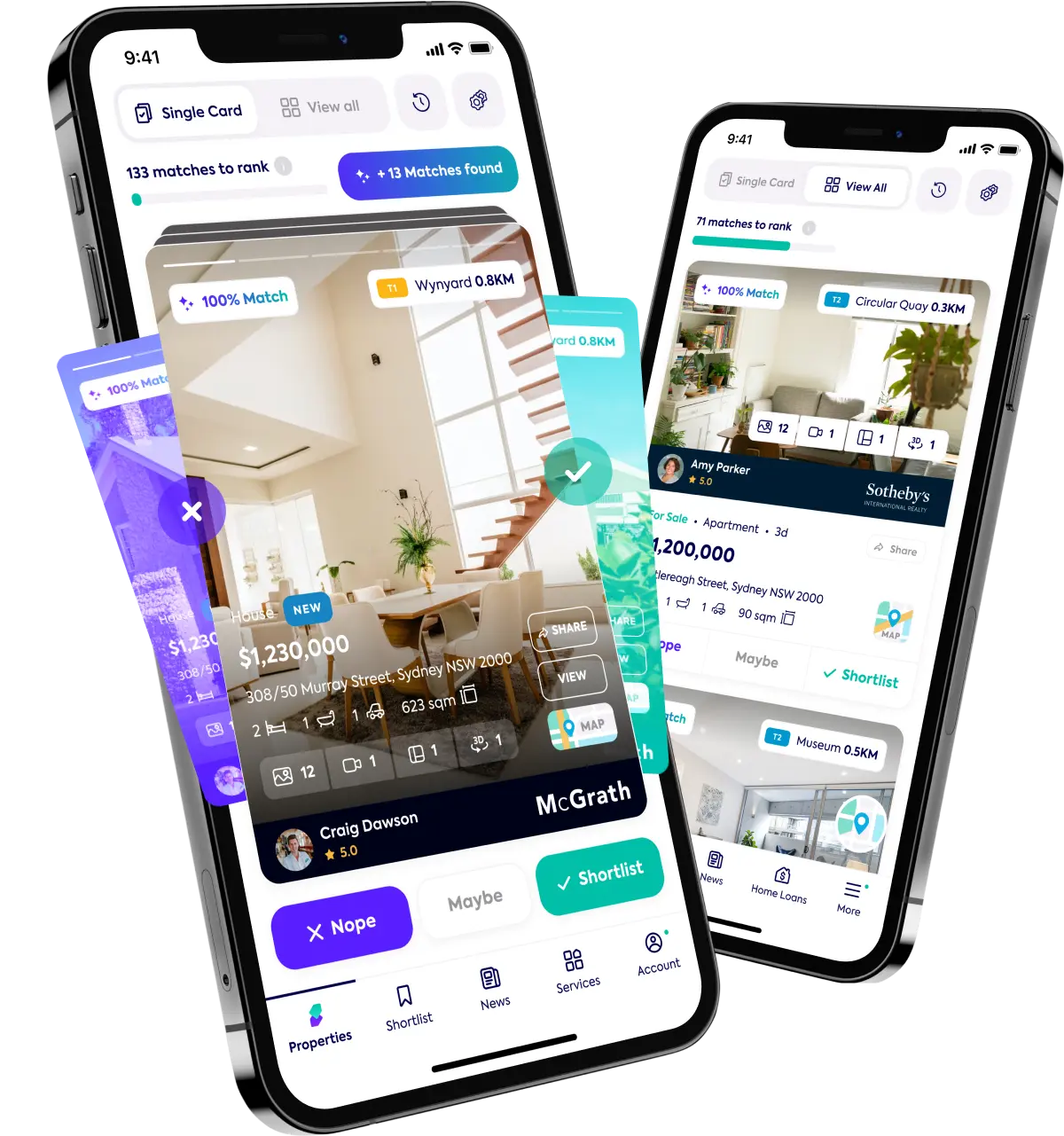Wondering how to rent a house in Melbourne? Chances are, something’s drawing you to this intriguing city.
And what’s not to like about Melbourne? From its cool, artsy and cosmopolitan culture, to the gorgeous nature both in and around the city, it’s hard not to fall for it.
But for those of you who are haven’t lived there before or are thinking of moving out for the first time, you might need some help with knowing how to rent in Melbourne.
So we’ll cover how to find Melbourne rental properties, what documents you’ll need, and what to expect during the applications process.
Related articles:
- How to Rent a Home in 2022
- 8 Reasons To Live In Melbourne
- The Average House Size in Melbourne and Across Australia
- Best Suburbs to Live in Melbourne
What is the procedure for renting a house?
1. Finding a house for rent in Melbourne
Generally in the state of Victoria, you will be liaising with a real estate agent who is acting on behalf of the landlord or property owner. However, there are properties for rent by owner as well.
The first thing you should decide is your budget, which will dictate whether you live alone or with a flatmate and where you’ll live. As in any other city, some neighbourhoods are more expensive than others.
It might be helpful to have a look at the rental market and if it’s the right time to be moving.
Once you have an idea of your living situation, you can start your search for Melbourne rentals by heading to Soho.com.au. Set up your match profile with your interested areas and criteria and we’ll do the matching for you.
Sit tight and we’ll share all the available homes for rent in Melbourne VIC within your criteria!
Pro tip: if you’re on a budget, check out our article on the cheapest suburbs in Melbourne to get an idea of where you can rent a house in Melbourne more affordably.

2. Set up an inspection
Once you find a property you like, contact the agent to set up an inspection. Seeing it in person is crucial. You can’t just rely on photos and videos alone. In fact, some real estate agents and owners will only accept applications from people who have seen the property in person.
But if you really can’t make the inspection yourself, send a representative in your place to check that the home is in good living condition. Just remember that whoever attends the inspection might need to furnish identification.
You can read more about looking out for pest infestations during the inspection here.
3. Submit your application
If you’re seriously considering a rental property, the next step is to submit an application. The application will tell the real estate agents or landlord about who you are.
You’ll fill in details on where you’ve lived and worked as well as your current salary.
Remember that the rental market in Melbourne is competitive. Expect to have other renters trying to score the same house as you. Make sure your application is complete and convincing.
Here’s our guide on who to put as your personal references on your application as well as how to answer a common question on most applications “why is this rental property right for me?“.
Another useful guide is how long rental applications take to be approved.
Pro tip: because the Melbourne property market is so competitive, you need to act fast. Bring a copy of the rental application with you to the inspection so if you like the property, you submit it on the spot.
4. Signing the lease

If the agents and landlords are happy with your application, you will proceed to the next step: signing the lease agreement.
The rental contract or lease agreement is effective immediately and states things like:
- How long you can live on the property
- How much the rent is
- Any conditions about pets, noise etc.
Make sure you have a good read through the lease and bring up any concerns with the agent. If there are issues with the house, they should be recorded on the rental inspection sheet so you’re not potentially blamed for an issue that was there before you.
5. Connecting utilities
Once you’ve signed the contract, it’s all official and you can start thinking about connecting all the utilities.
Water, gas and electricity are your responsibility, as well as internet and telephone. Soho For Renters makes all of this easy and fast. All you have to do is tell us what you need set up or transferred from a previous property, and we’ll have it all set up for the day you move in.
6. Pay the bond
Almost every rental property will have a bond which acts as a deposit in a hotel.
In case you stop paying rent or damage something in the property, the landlord can use the bond to help settle the money. The bond should not be more than the cost of four weeks’ rent.
If all goes off without a hitch during your rental period, your bond will be returned to you.
7. Complete an inspection or condition report
To make sure everything is in working order, and that any issues with the house are recorded, you’ll be asked to complete a condition report.
Check on things like the oven, stove, taps, heating and locks. If there’s anything that needs to be mentioned, bring it up to your real estate agent or landlord.
What’s included in a rental property?

While most rental properties will come unfurnished, there are some which are fully or partially furnished as well. Besides that, your rental property should include:
- Kitchen cupboards
- Stove and ovven
- Curtains or blinds
- Light fixtures
- Heating
- Hot water
Some listings may advertise air conditioning and built-in wardrobes which is a plus!
The tenant will usually be responsible for utility bills like water, gas and electricity but check with the agent or owner about this.
Amenities like WiFi will also be up to the tenant.
What documents do you need to rent in Melbourne?
Renting a house in Melbourne, like most of Australia, will involve a point system in the application. You need 100 points, almost half of which are earned through a photo ID like a driver’s licence or passport.
Other documents between 10-15 points are earned from:
- Bank statements
- Rental ledgers (or anything showing your rental history)
- Employment letters or pay slips
- Utility bills
- Personal reference list
- Cover letter (our guide on how to ace the cover letter)
Remember to tell your personal references that they may be contacted by the agent.
What’s the average rent in Melbourne?
Corelogic data from July 2022 showed Melbourne as the most affordable capital city with the average rent at $480 per week.
How many payslips do you need to rent a house?

You can either provide pay slips or an employment contract in your rental application. If you’re sharing payslips, you can include three to six of your most recent payslips from your work.
Liked learning about how to rent a house in Melbourne?
Check out our other articles on buying, renting and interior design. Looking for units in Melbourne instead? We got those too.
Whether the search is for houses in South Melbourne or apartments in surrounding suburbs, Soho can give you access to all the available property listings.
Set up your match profile on Soho and get matched with all the new homes within your criteria.














